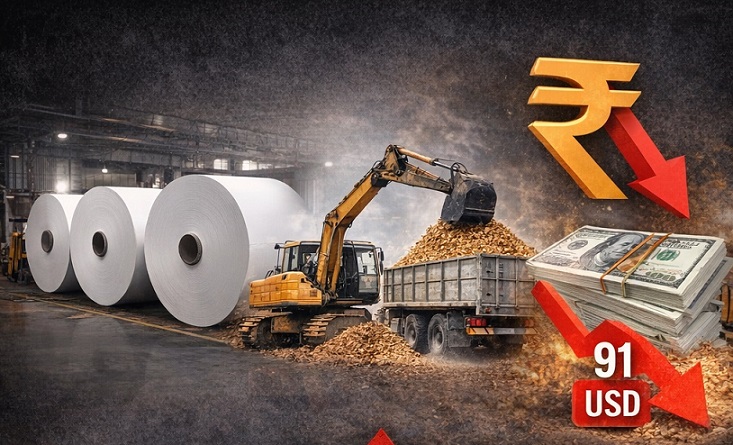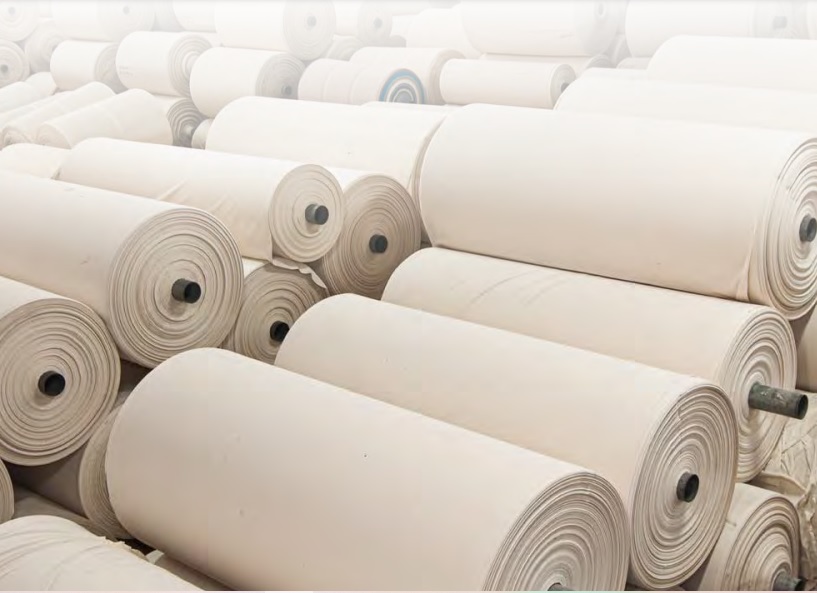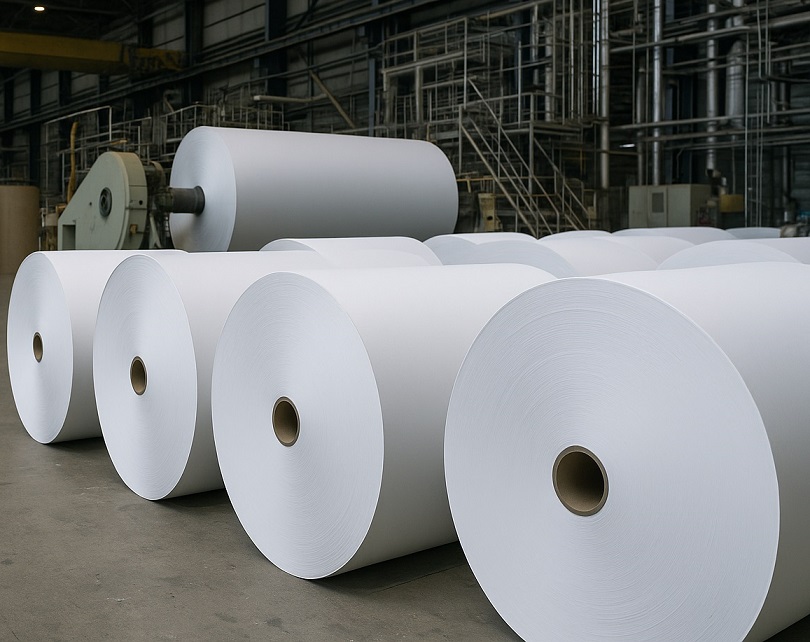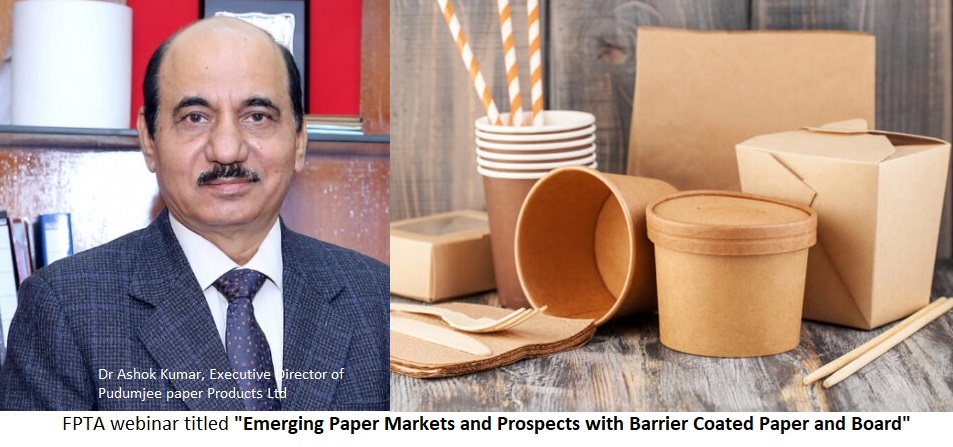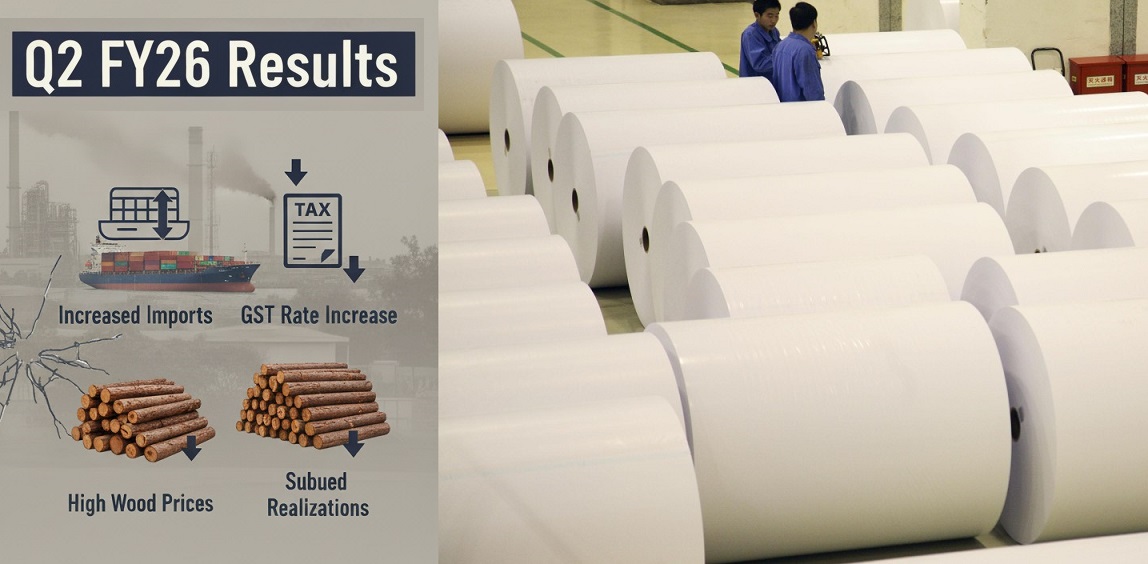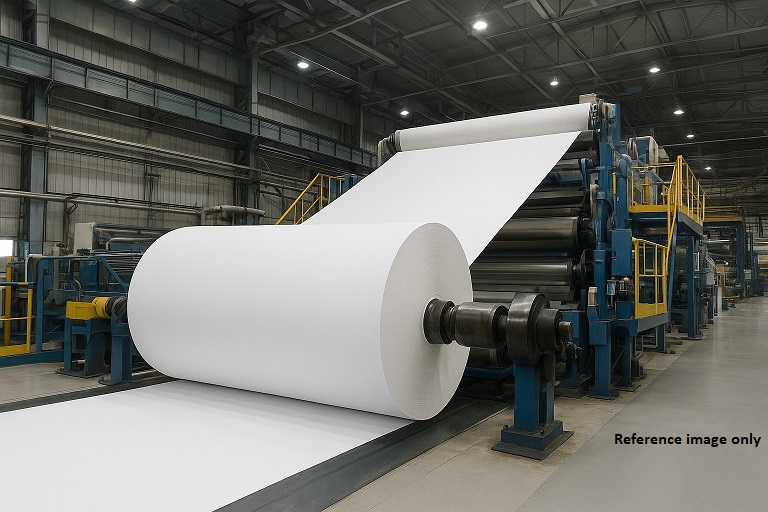INR depreciation impacts wood imports; paper prices are expected move north by 3-4% in January 2025
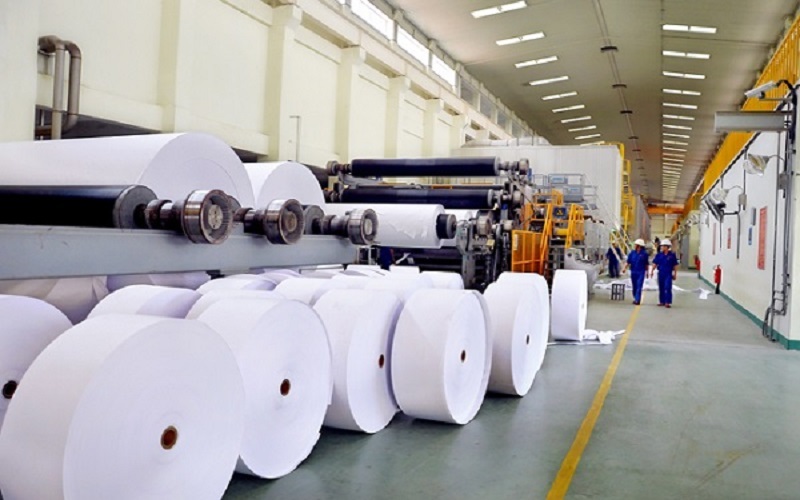
INR depreciation impacts wood imports; paper prices are expected move north by 3-4% in January 2025
- The depreciation of INR has also impacted the Wood/Woodchips import program, posing challenges for integrated players
- Prices to move North by 3-4% in January and further by similar quantum by March 2025
- The difference in price between domestic and international mills is also a key factor.
The Pulp and Paper Times
Earlier market volatility was visible in different grades at different times. The current paper trade market scenario is highly volatile across all grades uniformly, primarily due to demand, geopolitical tensions and conflicts. These disturbances have significant implications for both the demand and supply dynamics across various paper grades, including coated, uncoated woodfree, duplex, newsprint, and kraft paper segments.
Bilt Graphic Paper Products limited (BGPPL) informed in its circular dated December 28 to all channel partners and dealers that In recent days, the Indian Rupee (INR) has experienced notable depreciation, leading to a considerable rise in cost for all imported raw materials. This has particularly affected Unit Bhigwan, which relies on approximately 65% (by value) of imported raw materials. The depreciation of INR has also impacted the Wood/Woodchips import program, posing challenges for integrated players as they struggle to manage raw materials supply issues.
Speaking to The Pulp and Paper Times, Mr. A S Mehta, President and Director of JK Paper, said, “Global logistics costs & pulp costs have risen sharply, with some of the burden passed on to customers and the major portion of it are absorbed by OEMs. A slowdown in market demand in many developed countries across world has led major big manufacturers especially in China & Indonesia have started shifting their products to markets like India, where demand remains relatively stable & growing compared to many big nations across geographies. This has put pressure on domestic mills to lower their prices, as cheaper imports are gaining ground due to this disparity. It may pose a threat to the industry and some Mills may decide to shut the operation as they will become unviable.,”
Furthermore, global shipping remains a challenge due to ongoing uncertainties in the US- China supply chain dynamics and geopolitical issues, adding to the overall complexity of procurement and logistics.
Speaking to The Pulp and Paper Times, Mr. Mehul Mehta, President of FPTA, Said, that the combined effect of disrupted exports and imports, along with fluctuating demand, leads to significant price volatility in the market. Businesses find it challenging to set stable prices for their products, which affects their profitability and long- term planning. The difference in price between domestic and international mills is also a key factor.
“As a result, we expect prices to move North by 3-4% in January and further by similar quantum by March 2025. Should there be any escalation in pulp prices, these increases may be even higher. We also wish to emphasize that this time, we shall not be able to extend any old price benefits based on bookings, volumes, or other considerations. The price applicable shall be based on the dispatch date. Kindly inform your customers about this development and encourage them to step up dispatches to mitigate the impact of the price revisions,” BGPPL said in the circular.
“Increase in prices of paper is definitely expected over the next few years. However, the calibration of prices for domestic mills would also be dependent on prices of pulp and international prices of finished paper. The difference in domestic and international prices can and will open flood gates of imports into India,” Mr. Mehul concluded.
“Various segments of the Indian paper industry are projected to grow or decline at different rates in the coming years. Shifts in demand patterns, coupled with high volatility and evolving market behaviours, are influencing domestic paper consumption. These disruptions create opportunities, with first movers positioned to benefit the most. According to IPMA figures, the Writing & Printing (W&P) segment is expected to grow at a CAGR of 2.9%, while the Packaging Board segment is anticipated to grow at a CAGR of 7.2%.” Mr. A S Mehta said.
Web Title: INR depreciation impacts wood imports; paper prices are expected move north by 3-4% in January





 Join WhatsApp Group
Join WhatsApp Group Join Telegram Channel
Join Telegram Channel Join YouTube Channel
Join YouTube Channel Join Job Channel (View | Submit Jobs)
Join Job Channel (View | Submit Jobs) Join Buy Sell Channel (Free to Submit)
Join Buy Sell Channel (Free to Submit) Paper News Headlines Channel (Free to read)
Paper News Headlines Channel (Free to read)



